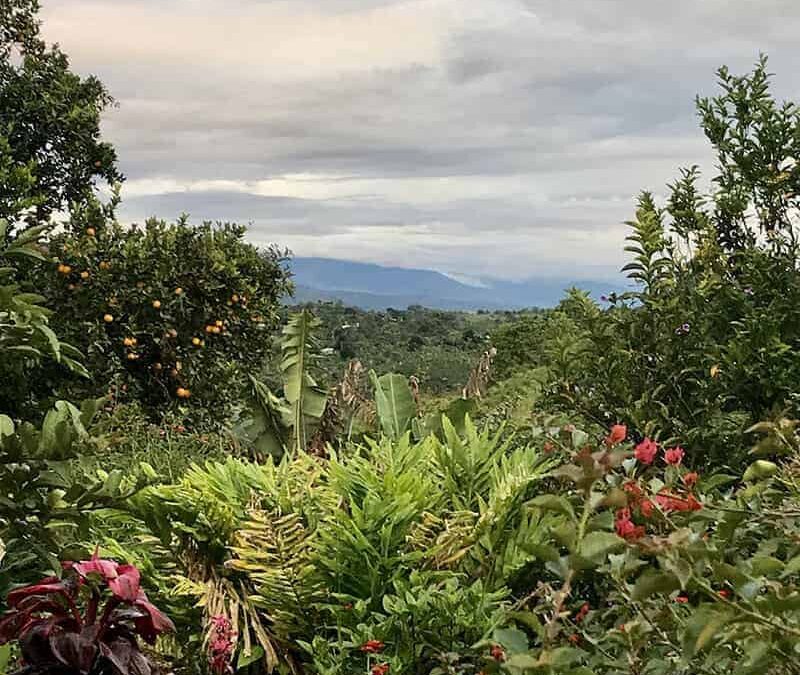The Sarria family also have a mechanical dryer on site in order to ensure that all coffee that leaves the benificio has a consistent moisture level. Drying times in the parabolic dryer will naturally be affected by weather, temperature, humidity and suchlike. A moisture level of between 11 and 13% will ensure the coffee has a much longer shelf life, which means the quality inherent will survive the onward journey to the dry mill, the port, the ocean transit and the next leg to the roaster.
Between Finca Cristalina & Finca Beracá, the family produce about 650 kg of green coffee, about 45 metric tonnes. This won’t all be specialty-grade, and the lower, commercial-level grades are sold into the commercial market. Banexport arrange this, as well as find homes for all the various grades, from the very top lots, which are sold as microlots to the middle-of-the-road speciality-grade lots that are often blended into regional blends. For a farmer to have an export partner that will take all of their coffee is a big plus, and it removes the onerous task of finding a market themselves, as well as the inevitable sifting of offers from local traders, big multinational offices, and everyone in between.
Banexport have also helped the family with new processing techniques, some better agronomy practices, and some specific training on when to instruct the picking of different varietals to ensure maximum sugar levels in the cherry. We cupped (tasted) some of the family’s coffee later on in the week, and the results were pretty awesome. So awesome in fact, that we purchased a small lot of their Castillo from Finca Cristalina, Castillo is a varietal that has 1/20th part robusta (the coffee type that is used in instant coffee), and to find Castillo that tasted so good was a big surprise.
After they showed us around their operations, answering our daft questions, and giving us more details on how they harvest, how many itinerant workers they support, and their plans for both Fincas, we sat with the family on their veranda, looking out over the edge of one of the plantations, watching the coffee trees sway in the gentle breeze, listening to the birdsong, and chatting away whilst the sun set. Tough gig? Not so much.
